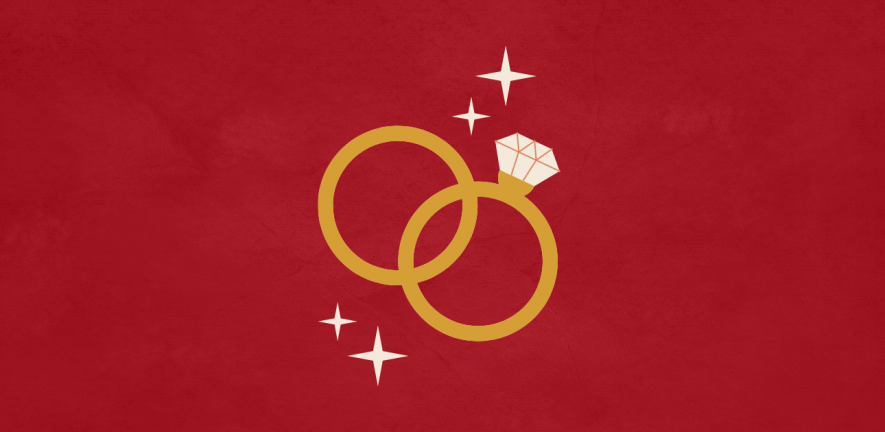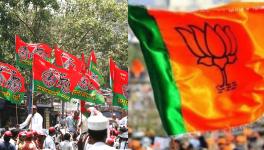Why is Increasing The Minimum Marriage Age For Girls to 21 Years Being Debated?

ACCORDING to present laws governing child marriage in India, women are permitted to marry at an age distinct from men. The Prohibition of Child Marriage Act, 2006 (PCMA) defines ‘child’ under Section 2(a) of the Act as “a person who, if a male, has not completed twenty-one years of age, and if a female, has not completed eighteen years of age.” It prohibits child marriage or “a marriage to which either of the contracting parties is a child”.
Further, legislation governing marriage under personal laws of several religions, namely, the Indian Christian Marriage Act, 1872, the Parsi Marriage and Divorce Act, 1936, the Special Marriage Act, 1952, and the Hindu Marriage Act, 1955, mandate women to be at least 18 years of age and men at least 21 years of age to be eligible for marriage. Under Muslim personal law, a girl is permitted to marry when she attains puberty or completes the age of 15 years.
The differential minimum ages for marriage fixed for men and women was challenged at the Supreme Court by Ashwini Kumar Upadhyay, advocate and leader of the Bharatiya Janata Party Delhi unit, on October 26, 2020. His petition raised the plea to set a uniform minimum age by increasing the permissible marriage age applicable to women to 21 years. Upadhyay sought the transfer of petitions filed in the Delhi High Court, dated August 14, 2019, and a similar petition filed in the Rajasthan High Court on September 12, 2019.
On December 21, 2021, The Prohibition of Child Marriage (Amendment) Bill, 2021, was introduced in Lok Sabha to increase the minimum age of marriage of women to 21 years, overriding any other law, custom or practice, including faith-based personal laws.
Also read: Minimum legal age of marriage for women being raised to 21 years: pros and cons
On January 13, a Supreme Court division bench, led by the Chief Justice of India, allowed the transfer petition by transferring the writ petition pending before the Delhi high court to the Supreme Court. The court directed the Union Government’s response to the petition filed by the National Commission for Women (NCW) to raise the minimum age of marriage for Muslim women to be on par with the statutory law on December 9, 2022. The NCW’s plea also emphasised the uniformity in the minimum ages of marriage by lowering the age of marriage for men from 21 to 18 years.
Praying for uniformity in the minimum age of marriage for men and women, the transfer petition points out the distinction between the minimum ages to be patriarchal, arbitrary and discriminatory.
On January 31, 2023, the Delhi high court bench of Chief Justice Satish Chandra Sharma and Justice Subramonium Prasad, on being informed of the January 13 order of the Supreme Court by the petitioner, sent a petition seeking uniform minimum age for marriage for both men and women to the Supreme Court.
What is the original petition’s rationale?
Praying for uniformity in the minimum age of marriage for men and women, the transfer petition points out the distinction between the minimum ages to be patriarchal, arbitrary and discriminatory. Through the petition, Upadhyay prayed for bringing the minimum age of marriage for both men and women at par, that is, at 21 years of age. The legal provisions in the laws that fix a lower minimum age of marriage for women at 18 years reinforce discriminatory stereotypes, the petition maintained.
According to the petition, such a distinction perpetrates de facto discrimination against women, as well as de jure discrimination on the ground that it is violative of Articles 14, 15 and 21 of the Constitution. The petition interpreted the right to live with dignity as including the right not to be perceived as unequal and the right to equal social standing.
It argued that the Law Commission of India, in its 205th Report titled Proposal to Amend The Prohibition of Child Marriage Act, 2006 and Other Allied Laws has observed that there is no scientific basis for such a distinction in the minimum age of marriage between men and women.
It emphasised that the National Human Rights Commission, in its recommendations during the National Conference on Child Marriage held in August 2018, called for fixing the uniform age of marriage for both girls and boys, highlighting the uniform practice of minimum marriage age followed in over 125 countries around the world.
According to the petition, the difference in the minimum ages of marriage is in contravention of the international legal framework laid under the United Nations Convention on the Elimination of All Forms of Discrimination Against Women. Article 16(1) of the Convention, the petition states, requires States that are parties to the Convention to eliminate discrimination against women in all matters related to marriage, to ensure that women have the same right to enter into marriage with their full and free consent. India has ratified the Convention and is bound to abide by its principles.
The petition noted that the Committee on the Elimination of Discrimination against Women, in its General Recommendation on ‘Equality in marriage and family relations’ noted the existence of laws stating different ages for marriage for men and women, and observed, “As such provisions assume incorrectly that women have a different rate of intellectual development from men, or that their stage of physical and intellectual development at marriage is immaterial, these provisions should be abolished. ”
The petition also highlighted that the difference between the minimum ages, with a higher minimum age set for men, perpetrates “power imbalance” since such distinction points to a “hierarchy of power”.
What is the conflict with the age of majority under other laws?
Under the Indian Majority Act, 1875, a person attains the age of majority upon completing 18 years of age. Further, the Indian Contract Act, 1872 entitles any person who has attained the age of majority to be competent to enter into a contract, and according to the Juvenile Justice (Care and Protection of Children) Act, 2015, except in certain cases, such a person who has completed 18 years of age is held criminally liable for their actions.
Giving a historical perspective to the laws enacted to address the issue of child marriage, Ali pointed out that except for the first law prohibiting child marriage during the social reform movement when there was a need for it, the law on child marriage has never been implemented in India.
Bharti Ali, co-founder of HAQ: Centre for Child Rights, and social activist working on issues concerning the rights of women and children for over three decades, shared her views with The Leaflet and opined that while there is a need for uniformity, the minimum age of marriage should be 18 and not 21 years. Ali opined that marriage is a “private domain” where adults should have the freedom to enter into legal relationships, that is, marriage. “The State has no reason to be controlling adults’ sexuality. The State cannot recognise people as adults, while also giving certain rights and taking away others,” she added.
Also read: Equality in marriage: Legal age for both men, women should be 18 years
How does the petition stand in relation to its implementation?
By urging to increase the minimum age of marriage to 21 years, the petition seeks a progressive legal system. According to the petition, a higher minimum age is bound to ensure autonomy to women in every sense, including reproductive autonomy, and the autonomy to pursue education and occupation after finishing school at the age of 18 years. With the minimum age of men fixed at 21 years, according to the petition, women should have the equal opportunity to follow their educational and economic pursuits in various spheres “without the sword of marriage — which often means a loss of freedom — hanging over their heads”.
Giving a historical perspective to the laws enacted to address the issue of child marriage, Ali points out that except for the first law prohibiting child marriage during the social reform movement when there was a need for it, the law on child marriage has never been implemented in India. She opines that the changes we see today are on account of collective efforts to improve women’s education.
There needs to be harmony among the POCSO Act, the PCMA and personal laws in such a way that consenting adolescents are not forcibly brought into the criminal justice system.
“We see that although the law (Section 13 of the PCMA) provides that child marriage can be stopped from taking place by getting an injunction order from the courts, in reality, such an injunction is not being sought. It is a provision that has been in the loss ever since it came into existence,” she added.
According to a factsheet published by the National Family Health Survey-5 (2019-21), 23 per cent of women in the age group of 20–24 years were married before the age of 18 years. However, statistics of the National Crime Records Bureau show only 785 cases registered under the Prohibition of Child Marriage Act in 2020 and 1,050 cases in 2021. Thus, reporting of underage marriage remains abysmally low.
Ali noted that instead of waiting for the law to take its course, it is important to work with panchayats, anganwadis and local school teachers to take the mandate of preventing early marriages forward by creating an empowering environment for young women. Further, Ali stressed that if the minimum age of marriage is raised to 21 years, while the legal age of attaining majority is 18, the law is bound to take its course when the families of the parties are unhappy, particularly in cases of interfaith or inter-caste marriages. “The law will provide the scope to criminalise marriages where the parties have made the choice to enter into a relationship as adults,” she said.
It is pertinent that besides an increasing number of states passing anti-conversion or ‘love jihad’ laws, interfaith marriages are brought under the scrutiny of law on unsubstantiated allegations including kidnapping, ‘disrupting communal harmony’ and forcible conversion.
According to the submission of the National Coalition for Advocating Adolescent Concerns to the Union Ministry of Women and Child Development in connection to the proposed amendment to the PCMA, 65 per cent of the 83 cases in which PCMA was invoked, parents used the law against the choice of marriage by their daughters.
As per Ali, it is a myth to believe that increasing the minimum marriage age will give girls the negotiating space for higher education since the cost of higher education in the country is expensive, causing the girls to be pulled out of the education system.
Unless increasing the age of marriage makes a similarly substantial contribution to the likelihood of a higher age-of-conception, the rationale for increasing the age of marriage cannot be rooted in sexual and reproductive health outcomes, experts note.
Advocate Persis Sidhva, Director of Rati Foundation, which works to create spaces and communities where children are safe from sexual violence, said, “Multiples vulnerabilities like poverty, lack of access to education and vocational training, and other socio-economic barriers that girls face cause early marriages. Increasing the age of marriage is not going to solve the concerns.”
Sidhva opines that the present issue of minimum marriage age connects to the larger issue of criminalisation of adolescent consent under the Protection of Children from Sexual Offences Act, 2012 (POCSO Act), where girls choose to be in relationships out of their free will. “We are going back to criminalising adolescent consent,” she added. Sidhva urged that there needs to be harmony among the POCSO Act, the PCMA and personal laws in such a way that consenting adolescents are not forcibly brought into the criminal justice system.
A study by legal resource group Partners for Law in Development titled Grassroots Experiences of Using the Prohibition of Child Marriage Act, 2006 reveals that girls who seek to prevent or escape forced marriage approach grassroots organisations rather than approaching the police or the Child Marriage Probation Officer.
Also read: The need for revising the age of consent under the POCSO Act
What are the concerns related to women’s health?
On the ramifications of continuing with the law that sets the minimum age at 18 years for women, the petition pointed towards the factsheet on Adolescent Pregnancy published by the World Health Organization, which said that women who get pregnant before the age of 20 “face higher risks of low birth-weight, preterm delivery, and severe neonatal conditions”. It also pointed out that new-borns, born to such mothers, face severe health risks.
The petition further states that under Article 21, of which the right to health is an integral part, read with Articles 39 and 47 of the Constitution, the State is under the duty to take appropriate steps to improve the health of its citizens.
However, according to public health experts, the age of marriage has an insignificant correlation with pregnancy and birth outcomes. Experts note that key pregnancy and birth complications including but not limited to unsafe abortions, haemorrhaging during childbirth, pre-eclampsia/eclampsia, still-births, pre-term births, congenital birth defects and low birth weight neonates, are a function of factors that occur much earlier in the life course, around the pre-adolescent period. These are typically addressed through public health programmes supporting nutritional supplementation in pre-adolescent to adolescent girls.
The social and economic factors governing the uptake of such interventions are a much stronger determinant of pregnancy and birth outcomes, as compared to the age of marriage.
If the minimum marriage age is raised from 18 to 21 years, while underage marriages continue to not be void ab initio, the lack of a strict law fails to substantiate the benefits claimed under the petition.
According to a report published by BMC Pregnancy and Childbirth, an open access, peer-reviewed journal, in 2021, India has seen a significant decline in maternal mortality rate in the last 20 years on account of various policies and cash incentive schemes launched under the National Rural Health Mission in 2005, which reduced financial barriers in accessing maternal health services. Such schemes include the Janani Suraksha Yojana, the Janani Shishu Suraksha Karyakram, the Pradhan Mantri Matritva Vandana Yojana, and the Pradhan Mantri Surakshit Matritva Abhiyan, the report provides. Community-level involvement was attributed as one of the major reasons for the success of the ongoing policies by the report.
The report also points out the need to intensify efforts through such schemes in socio-economically backward states, where the odds of maternal deaths were twice in comparison to the southern states. It further flags the meagre health sector allocation in India’s budget (2021-2022) at 1.28 per cent as a major concern.
According to a research study conducted among rural adolescent girls, published by the International Journal of Pediatric Research, the highest prevalence of severe anaemia was found in the 12–14 year age group. With nutritional supplementation, if necessary, and in the absence of further complications, haemoglobin levels regress to normal over the next few years following menarche.
Empirically, the age of conception appears to increase as a function of improved socio-economic status, education and occupation opportunities in a population. Unless increasing the age of marriage makes a similarly substantial contribution to the likelihood of a higher age-of-conception, the rationale for increasing the age of marriage cannot be rooted in sexual and reproductive health outcomes, experts note.
Also read: Civil society expresses concern over increasing marital age of women
What is the law on the voidability of child marriages?
Under the PCMA, child marriages are voidable, that is, a person married below the minimum age can apply for annulment within two years of attaining majority (before the age of 20 years). The Amendment Bill of 2021 increases the period to seek an annulment to five years, rendering the marriage voidable by the party who was a child at the time of the marriage.
In its judgment in Independent Thought versus Union of India (2017), the Supreme Court observed, “Child marriage is somehow ‘legitimized’ and the onus for having it declared voidable or a nullity is placed on the child bride or the child groom. Strangely, while prohibiting child marriage and criminalising it, child marriage has not been declared void.” Noting that under the Prohibition of Child Marriage (Karnataka Amendment) Act, 2016, every child marriage is void ab initio, the judgment opines that such law should be applicable throughout the country.
While increasing the minimum marriage of girls to 21 years is debated, the need for uniformity is universally agreed upon.
According to Ali, however, the option to nullify a marriage should be left at the discretion of the parties to the marriage. Ali shared, “We should be cognisant of the fact that we are not a homogenous society. We are a society with different cultures. There are tribal cultures where it is acceptable for the parties to live together before marriage, and these cultural differences need to be recognised. Although there is a need for change, we cannot force readiness through law. We need to invest in preparing our communities to make that change.”
The voidability provision of the law gives the choice to preserve marriage bonds. At the same time, however, if the minimum marriage age is raised from 18 to 21 years, while underage marriages continue to not be void ab initio, the lack of a strict law fails to substantiate the benefits claimed under the petition.
What are the recommendations of official Committees and Conventions on minimum marriage age?
While increasing the minimum marriage of girls to 21 years is debated, the need for uniformity is universally agreed upon. By analysing the above-mentioned laws that state the difference in marriage ages, it is clear that they lack any (practicable) reasoning.
In 2018, the Law Commission of India’s Consultation Paper on Reform of Family Law suggested that 18 years should be the minimum legal age for both men and women to get married. As per the panel, “If a universal age for majority is recognised, and that grants all citizens the right to choose their governments, surely, they must then be also considered capable of choosing their spouses.”
The paper added, “For equality in the true sense, the insistence on recognising different ages of marriage between consenting adults must be abolished. The age of majority must be recognised uniformly as the legal age for marriage for men and women alike as is determined by the Indian Majority Act, 1875, i.e. eighteen years of age.”
In November 2020, a Technical Note on the Global Programme to End Child Marriage by the United Nations Children’s Fund and the United Nations Population Fund recommended 18 years as the minimum marriage age for boys and girls.
The Note comments on the “complex” and “polarising” issue of criminalisation of child marriages, and states that, “Setting a high minimum age for both sexual consent and marriage is problematic”. It points out the research that highlights the absence of evidence that the enforcement of child marriage laws is effective in reducing child marriages and may have negative effects on those strategies that are most likely to succeed in preventing child marriage. It highlighted the need to focus on community-based efforts to encourage changes in social norms and behaviours.
The research further states, “In some countries (e.g., parts of India), the intense focus on anti-child marriage laws precludes attention to complementary interventions to engage families and communities and to support for adolescent health, sexuality, education and support services.” Pointing out the negative effects of criminalisation, including the social stigma and ostracisation in the dissolution of child marriages and putting family members in prison, the Note emphasises the tendency of parents to use the law to break up “own-choice marriages” between adolescents that they do not approve of.
Also read: Will raising the marriageable age for women set her free or rob her freedom further?
In November 2014, the joint General Recommendation No.31 of the Committee on the Elimination of Discrimination against Women (CEDAW) and the Committee on the Rights of the Child (CRC) recommends the State Parties to the Convention on the Elimination of All Forms of Discrimination Against Women and the Convention on the Rights of the Child, to ensure “[t]hat a minimum legal age of marriage for boys and girls, with or without parental consent, is established at 18 years”.
India ratified both the conventions in 1992 and 1993 respectively. The general recommendations explain the views of the Committees on the obligations assumed under the conventions.
Get the latest reports & analysis with people's perspective on Protests, movements & deep analytical videos, discussions of the current affairs in your Telegram app. Subscribe to NewsClick's Telegram channel & get Real-Time updates on stories, as they get published on our website.
























